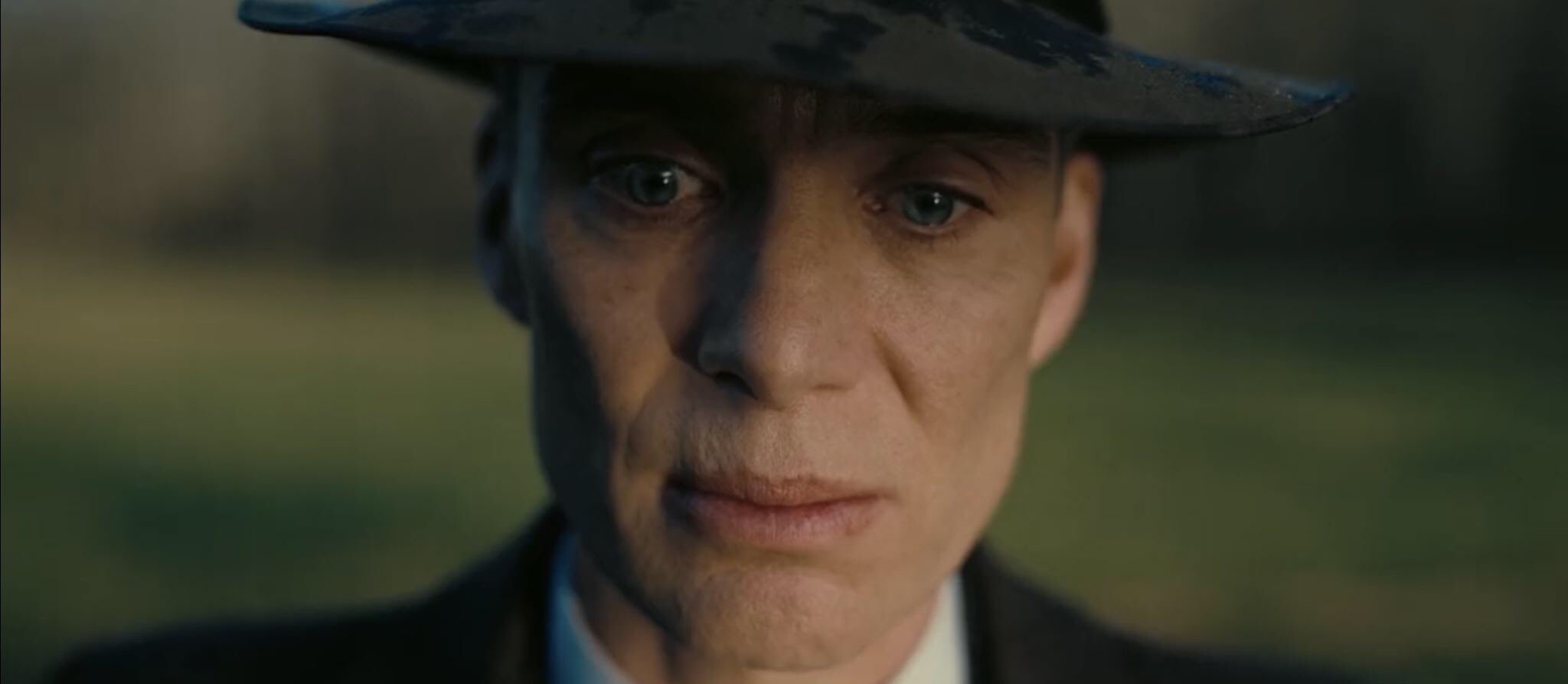Christopher Nolan’s biopic – for all its quantum theory and heady bombast – reveals a man who understood that one’s finer choice in words can make all the difference
In the opening of his new film, Oppenheimer, Christopher Nolan appears just as interested in J. Robert Oppenheimer’s cultural interests as he is in the brimming imagination of a young theoretical physicist. In a swift montage, we see Oppenheimer (Cillian Murphy) reading The Waste Land (1922) by the fire; he thuds a ball off the wall while listening to Stravinsky; he stares at Picasso’s Woman Sitting with Crossed Arms, and we share his uneasy feeling that the disjointed face is staring back. (This, mind you, is one of the film’s occasional anachronisms: Woman Sitting wasn’t painted for another decade, in 1937.) Though in compressing Kai Bird and Martin J. Sherwin’s monumental biography American Prometheus: The Triumph and Tragedy of J. Robert Oppenheimer (2005) into a workable screenplay, Nolan has been forced to skim over much of his protagonist’s early life. The keen mineralogist is gone, as is the ‘audacious, expert’ sailor, the college poet and any trace the Oppenheimer family art collection (reported by Bird and Sherwin to include Rembrandt, Vuillard, Renoir and Picasso).
What Nolan wisely chooses to retain is Oppenheimer’s precocity for languages. In the book, Bird and Sherwin recount how, at the age of nine, ‘Oppie’ would perform for his cousin: ‘Ask me a question in Latin and I’ll answer you in Greek’. We watch him startle his friend Isidore I. Rabi (David Krumholtz) by confidently delivering a lecture in Dutch, which he learned in six weeks, though it is with some bemusement that Rabi learns soon after that, despite being “a couple of New York Jews”, the schweitzer – showoff – doesn’t know Yiddish. Later, we find Robert antagonising with a grin the ardent communist Jean Tatlock (Florence Pugh) by correcting her analysis of Das Kapital: “Ownership is theft and so on”. “Property is theft” she replies, to which Oppenheimer retorts without a pause: “I’m sorry, I read it in the original German”.
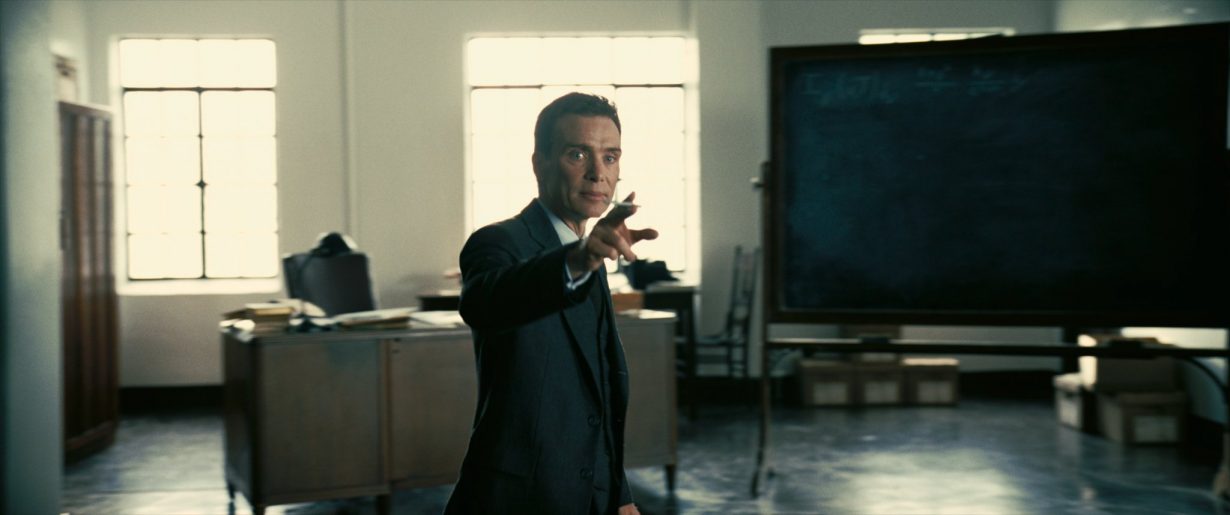

So Oppenheimer understood that one’s finer choice in words can make all the difference. Take, then, his now famous intonation of the Bhagavad Gita, as he recalled for an interviewer his reaction to witnessing the Trinity test: “Now I am become Death, the Destroyer of worlds”. It is likely that Oppenheimer’s translation was inspired by Arthur W. Ryder, under whom he first learned Sanskrit at Berkeley, and whose own 1929 translation depicts the great unveiling of Krishna before the prince Anjura thus: ‘Death am I, and my present task Destruction’. Both choose to render the word as ‘Death’, and yet this is often considered to be an unusual rendering. In Edwin Arnold’s 1900 translation, the deity reveals his universal form (‘countless eyes beholding … out of countless mouths commanding’) as ‘Time who kills, Time who brings all to doom, The Slayer Time, Ancient of Days, come hither to consume’.
How fitting that might have been. Throughout his career, time has been Nolan’s great obsession. In his hands, it is stretched, split, moulded, compressed and reformed. The results, it should be said, are uneven: where Inception (2010) and Interstellar (2014) succeed, for example, the grinding self-satisfaction of Tenet (2020) and Memento (2000) falter. For an otherwise undeniably gifted writer, he leans too heavily on the race-against-the clock formula: the Batman trilogy somehow features four. While there are obviously other attractions in telling the story of the Manhattan Project, one cannot shake the niggling feeling that Nolan simply wanted to make a film about the twentieth century’s most important countdown.
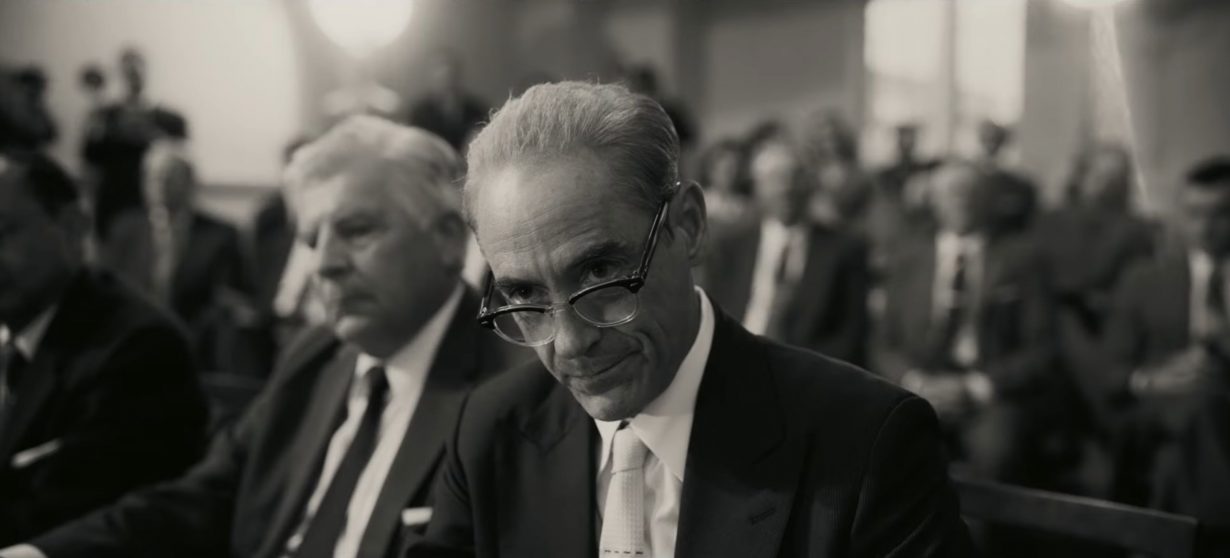
Oppenheimer jumps back-and-forth between two ‘chapters’, titled onscreen as ‘Fission’ and ‘Fusion’. The former, shot in colour, is – as the director has discussed – a subjective narrative, for which the screenplay was written in the first person; the latter, shot on a bespoke monochrome IMAX film by Kodak, is objective, relying heavily on the recorded documents of both the ‘Gray board’ (the closed-door hearing which resulted in Oppenheimer’s security clearance being revoked in 1954) and the failed Cabinet appointment of his mutual bête noire, Lewis Strauss (Robert Downey Jr), before the Senate in 1959. The rhythms are largely effective, though they are at times too blunt an instrument for breaking up the film’s longueurs.
We first encounter the young man who would become ‘the father of the atomic bomb’ (as per the cover of Time) at Cambridge, in the mid-1920s. He is gaunt, dishevelled and sleepless, “tormented by visions of a hidden universe”; the fledgling field of quantum mechanics has rent the classical physics of Newton and Einstein apart. Oppenheimer is occupied with ripples in puddles, flashes of colliding particles and of stars exploding and dying in the black, centreless vastness of space.
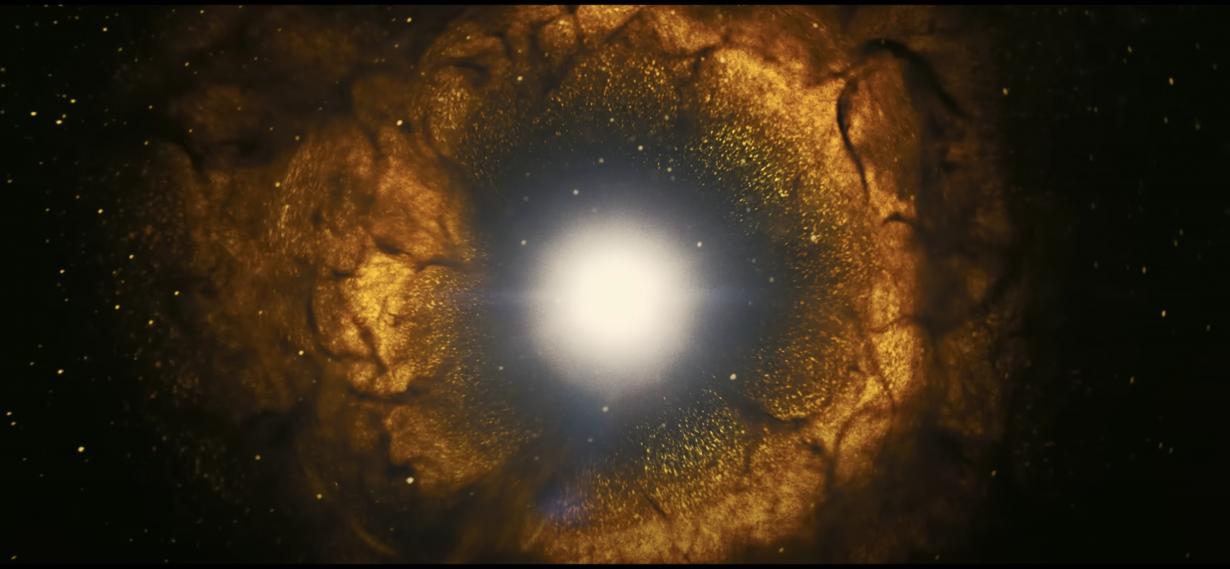
On returning to America, the fractured boy solidifies into a charismatic teacher of renown; his burgeoning group of students follow him around the campus like acolytes. Yet while his academic work is widely admired, his communist associations and sympathies cause some to bristle. Among them is Ernest Lawrence (Josh Hartnett), who makes clear to Oppenheimer that his support for unionisation is a blocker to joining the war effort. The Soviet Union has, at this point, just announced its splitting of the atom, and it is clear to the scientists that this has one obvious application: a bomb. The clock is set running.
Oppenheimer begins to moderate his political instincts and is duly appointed to manage the Project by General Lesley Groves (Matt Damon). A site is secured in Los Alamos, New Mexico, where the young Robert was sent by parents during a period of convalescence. A crack team of scientists is recruited and brought to the hastily assembled town in the desert. Some require additional convincing to leave, much to Groves’s fury: “Why? How about because this is the most important fucking thing to ever happen in the history of the world!”. Oppenheimer’s old friend Rabi is reluctant to see “three centuries of physics used to create a weapon of mass destruction”, yet is won over by Robert who admits that “I don’t know if we can be trusted with such a weapon, but I know the Nazis can’t”. It is made abundantly clear that for the many Jewish scientists working on the Project, their work is as much about defence as it is offence. Antisemitism, Oppenheimer points out, will also work in their favour: Hitler labelled quantum mechanics a “Jewish science”, and the consequent lack of resources will stall the rival team in Germany, led by his once-idol Werner Heisenberg (Matthias Schweighöfer).
The weapon is finally constructed and tested in the early hours of 16 July, 1945. Much has been made of Nolan’s insistence on using only practical effects to replicate the detonation of the “Gadget”, and while the explosion we see is certainly impressive (accompanied by an eerie silence that punctuates Ludwig Göransson’s magnificent score), it falls somewhat short of inspiring the same “terrible revelation of Divine power” that it does for its creator. In its aftermath, Murphy brilliantly captures the conflict: he smiles, he shakes hands, and yet his eyes hold something between panic and awe; when later addressing the town’s cheering audience, he hears a terrible roar, feels a blinding flash, and watches as the skin peels from the face of a young woman in the crowd; in a debriefing, he turns his head away from photographs of what is done to Hiroshima, Nagasaki and its people.
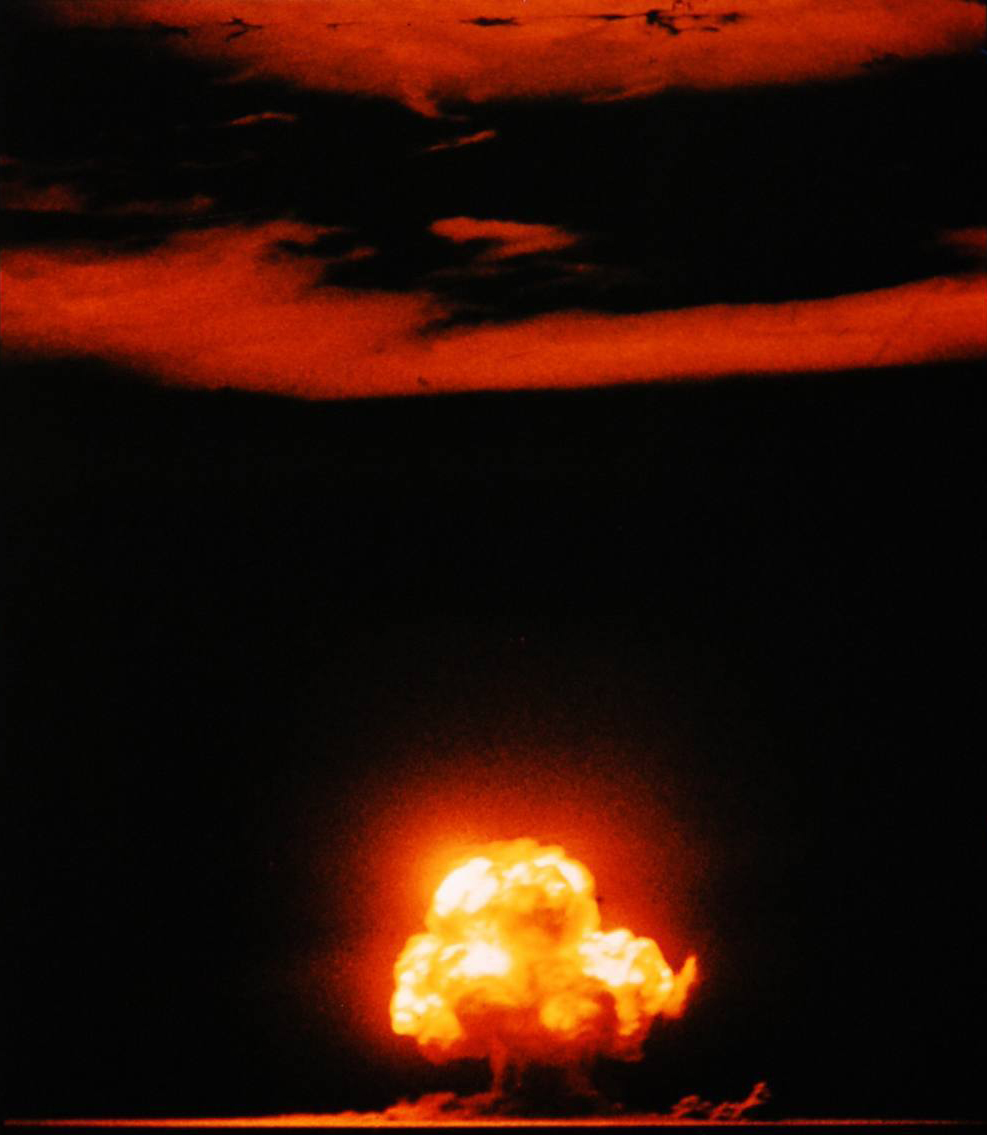
Throughout, Oppenheimer’s character is a mirror of the quantum world of paradox (pace Nils Bohr, played by Kenneth Branagh). He is ill at ease with the bomb and its legacy, and though he advocates not for further development like Strauss and Edward Teller (Benny Safdie), but for controls and international cooperation, his “moral qualms” wither under the white light of interrogation; when he confesses to Harry Truman that he has “blood on his hands”, the president thrusts a handkerchief in his face. He accepts mutely his fall from grace, much to the outrage of his beleaguered wife, Kitty (Emily Blunt), who remonstrates him: “You think because you let them tar and feather you that the world will forgive you?” He replies quietly: “We’ll see”.
In the following passage of the Gita, Krishna convinces the prince to do battle with his brothers and friends; to the deity they are already dead, and have ever been thus (‘Thou wilt but slay the slain’). The warrior must perform his duty; Time has already seen to the rest. In the closing moments, Oppenheimer imagines rockets careening through the air and a world engulfed by flames. He has done as asked; he shuts his eyes.
George Berridge is American literature editor at the TLS
